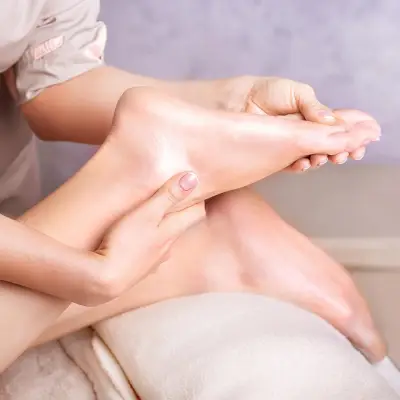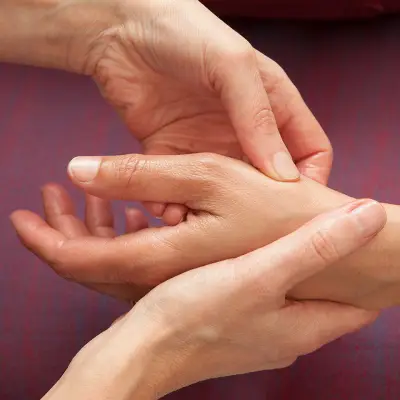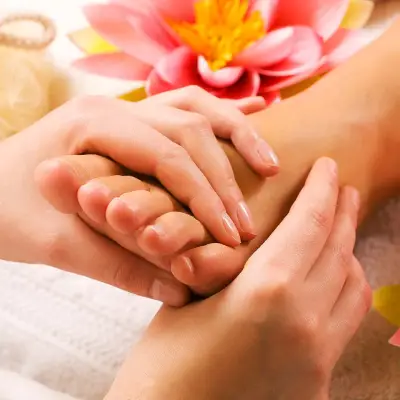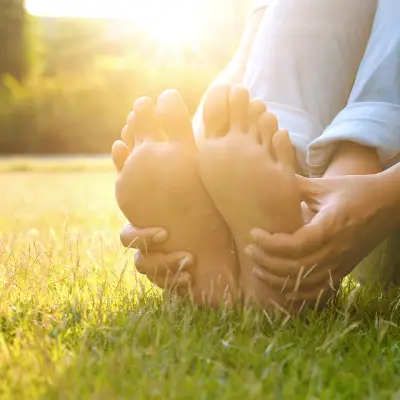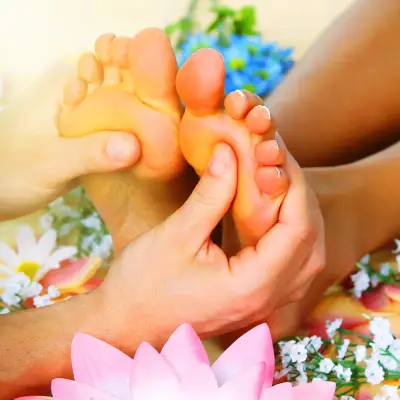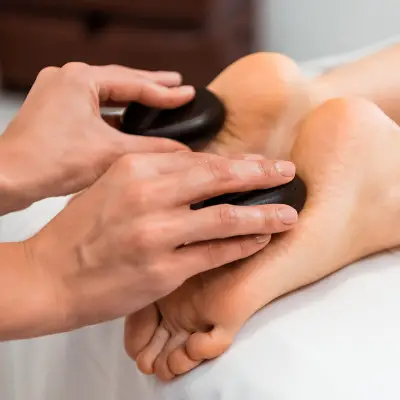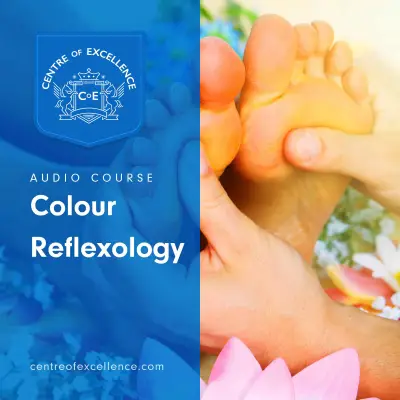As you approach the final weeks of pregnancy, you might find yourself looking for natural ways to encourage labour. Reflexology, a therapy that applies pressure to specific points on the feet, hands, and ears, has garnered attention for its potential to induce labour.
Let’s dive into how reflexology can be a supportive technique in preparing for childbirth.
Jump to:
- Understanding Reflexology and Labour
- How Does Reflexology Work to Induce Labour?
- Is Reflexology Safe During Pregnancy?
- Reflexology Points for Labour Induction
- Benefits of Reflexology in Pregnancy
- Reflexology to Induce Labour Success Rate
- Precautions and Considerations
- Frequently Asked Questions About Reflexology in Pregnancy
Understanding Reflexology and Labour
Reflexology is based on the belief that different points on the feet, hands, and ears correspond to other body parts, including the organs. The technique aims to promote health and well-being by stimulating these points. When it comes to pregnancy, specific reflexology points are thought to help encourage labour.
How Does Reflexology Work to Induce Labour?
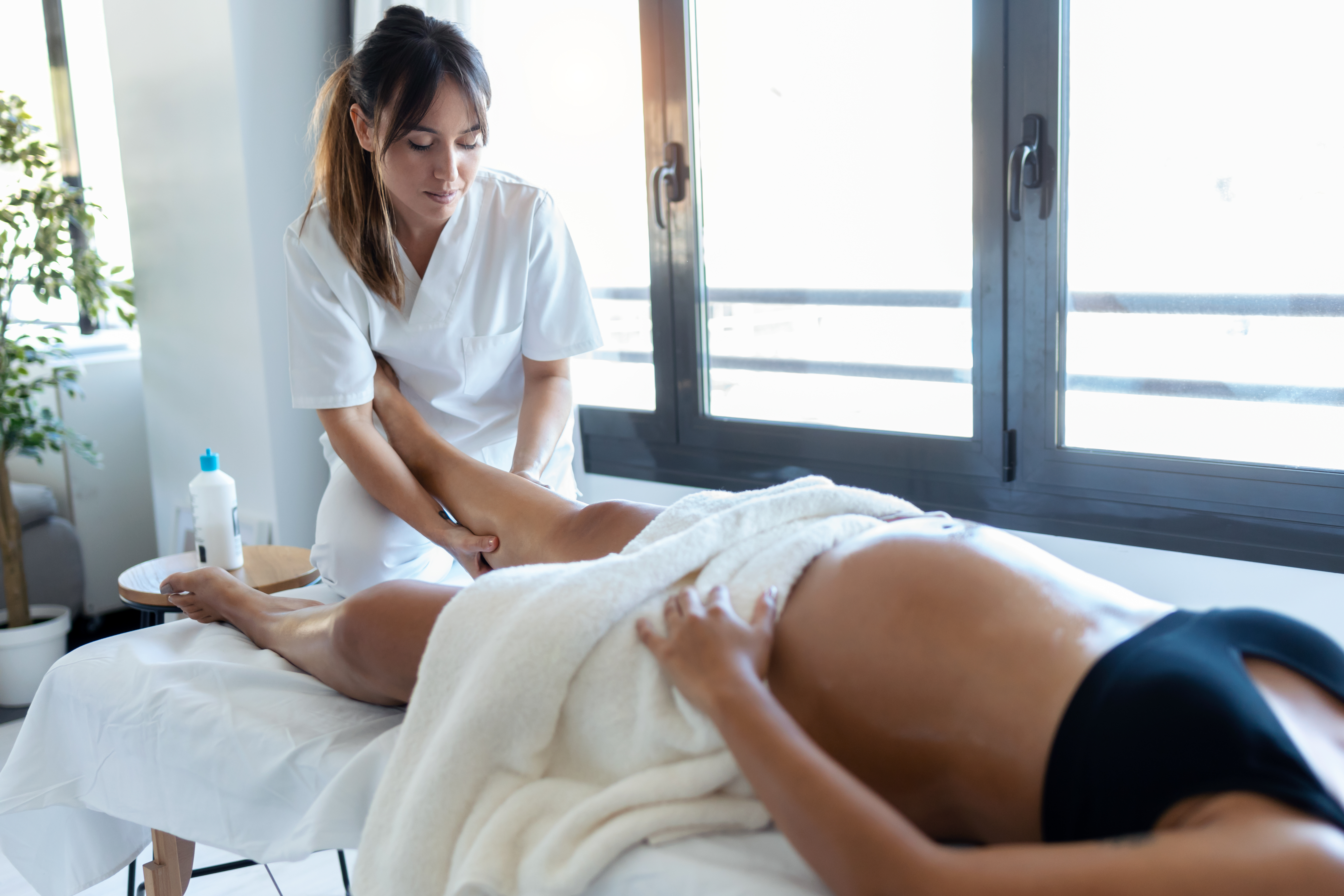
The idea behind reflexology to induce labour is that certain reflex points are linked to your reproductive system. Stimulating these points can, in theory, help to kick-start labour. These points include the reflexology pregnancy points and the uterus reflexology point, located on the foot, which are believed to be connected to the reproductive organs.
Is Reflexology Safe During Pregnancy?
Reflexology can be safe and beneficial during pregnancy, but it's important to seek treatment from a qualified practitioner who has experience in prenatal care. There are specific points on the foot that should be avoided until you're full-term because stimulating them earlier in the pregnancy could potentially cause contractions.
Reflexology Points for Labour Induction
Many expectant mothers have explored reflexology and acupressure as gentle, non-invasive methods to help nudge the body towards labour. Whether you're curious about how these techniques can aid in the birthing process or you're actively seeking alternatives to medical induction, discover how reflexology and acupressure can be part of your journey:
Acupressure Points to Induce Labour
Acupressure, similar to reflexology, involves a pressure application to certain points on the body. Some acupressure points for inducing labour include:
- Spleen 6 (SP6): This spot is found just above the ankle, on the lower calf. It's thought to aid in labour preparation by helping to soften the cervix and strengthen contractions.
- Large Intestine 4 (LI4): Situated between the thumb and index finger, stimulating this point may help to encourage contractions and is often recommended for pain management during labour.
- Gallbladder 21 (GB21): This spot is located on the shoulder, midway between the neck and the end of the shoulder blade, and directly above the nipple. GB21 is believed to facilitate labour by encouraging the descent of the baby into the pelvis. Due to its potential to stimulate contractions, it's often used during late-stage pregnancy and should be approached with caution.
- Bladder 60 (BL60): Situated between the Achilles tendon and the ankle bone on the outer side of the ankle. This point, known as Kunlun, is traditionally used to ease labour pain and assist with the dilation of the cervix. Stimulating BL60 may reduce discomfort and facilitate the natural process of labour.
Reflexology Points to Induce Labour
In reflexology, the focus is more on the feet. Points that might be targeted to help induce labour include:
- The Uterus Point: Located on the inner heel below the ankle bone, massaging this area might help ripen the cervix and encourage contractions, making it a focal point for those hoping to induce labour.
- The Ovary Point: Found on the sides of the foot, stimulating this point could help balance hormones that are essential for initiating labour.
- Pelvic Area Point: Situated on the heel, towards the outer side, representing the pelvic area in reflexology maps. Massaging this area can help relax the pelvic muscles and ease the birthing process by encouraging the body's readiness for labour.
- Pituitary Gland Point: This spot is found in the centre of the big toe, on the pad. The pituitary gland is the "master gland" because it controls hormone production. Stimulating this point in reflexology is thought to encourage the body to release oxytocin, which causes the uterus to contract.
How Do These Methods Work?
The theory behind using reflexology and acupressure for labour induction is about encouraging the body to begin the natural process of childbirth. These practices aim to promote relaxation, reduce stress, and enhance overall well-being by stimulating specific points, creating an environment that may be more conducive to starting labour.
When to Seek Reflexology for Labour
Most practitioners recommend waiting until you are at least 38 weeks pregnant before trying reflexology or acupressure for labour induction. This helps ensure that your body is ready and that you're close to or have reached full term.
Can Reflexology and Acupressure Guarantee Labour Induction?
It's important to manage expectations when exploring reflexology or acupressure as a means to induce labour. While many women report positive experiences, these practices are not guaranteed to start labour. They are best viewed as complementary therapies that can support your body's natural readiness for childbirth.
Benefits of Reflexology in Pregnancy
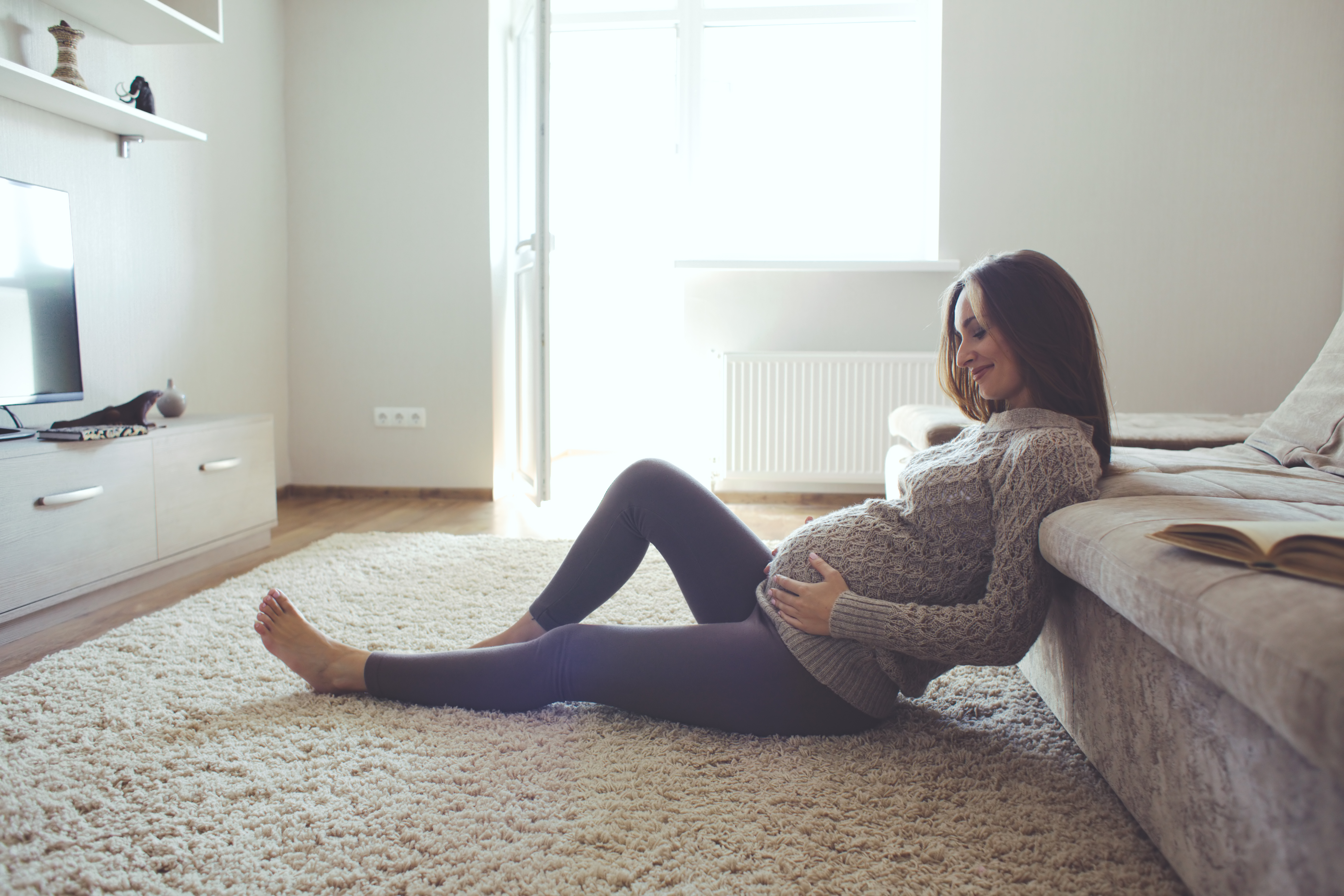
Reflexology offers several benefits during pregnancy beyond the potential to induce labour:
1. Relieves Stress and Anxiety
Pregnancy can be an emotional rollercoaster, bringing a mix of joy, anticipation, and, quite commonly, stress and anxiety. Reflexology steps in as a natural stress reliever, promoting relaxation and helping to calm the mind. By focusing on specific reflex points, this therapy can reduce cortisol levels (the stress hormone), thereby decreasing stress and anxiety.
2. Enhances Sleep Quality
Many expectant mothers find sleep difficult, thanks to hormonal changes, physical discomfort, and the mental load of impending parenthood. Reflexology can be a game-changer for improving sleep quality. Inducing a state of deep relaxation can help you fall asleep more easily and enjoy a more restful night's sleep, which is essential for your and your baby's health.
3. Eases Back Pain
Back pain is a common complaint during pregnancy as the body adjusts to carrying the extra weight of your growing baby. Reflexology can offer relief by targeting points that correspond to the back, reducing tension and promoting healing in the affected areas.
4. Reduces Swelling in the Legs
Swelling or oedema in the legs and feet is another common discomfort during pregnancy, often exacerbated by increased fluid retention and changes in blood circulation. Reflexology can help improve circulation and reduce fluid buildup, offering significant relief from swelling and discomfort in the legs and feet.
5. Supports Overall Wellbeing
Reflexology doesn't just address specific symptoms or discomforts; it takes a holistic approach to your health and wellbeing during pregnancy. By supporting the body's natural healing processes, it can enhance your overall sense of wellbeing, making your pregnancy journey more comfortable and enjoyable.
Reflexology to Induce Labour Success Rate
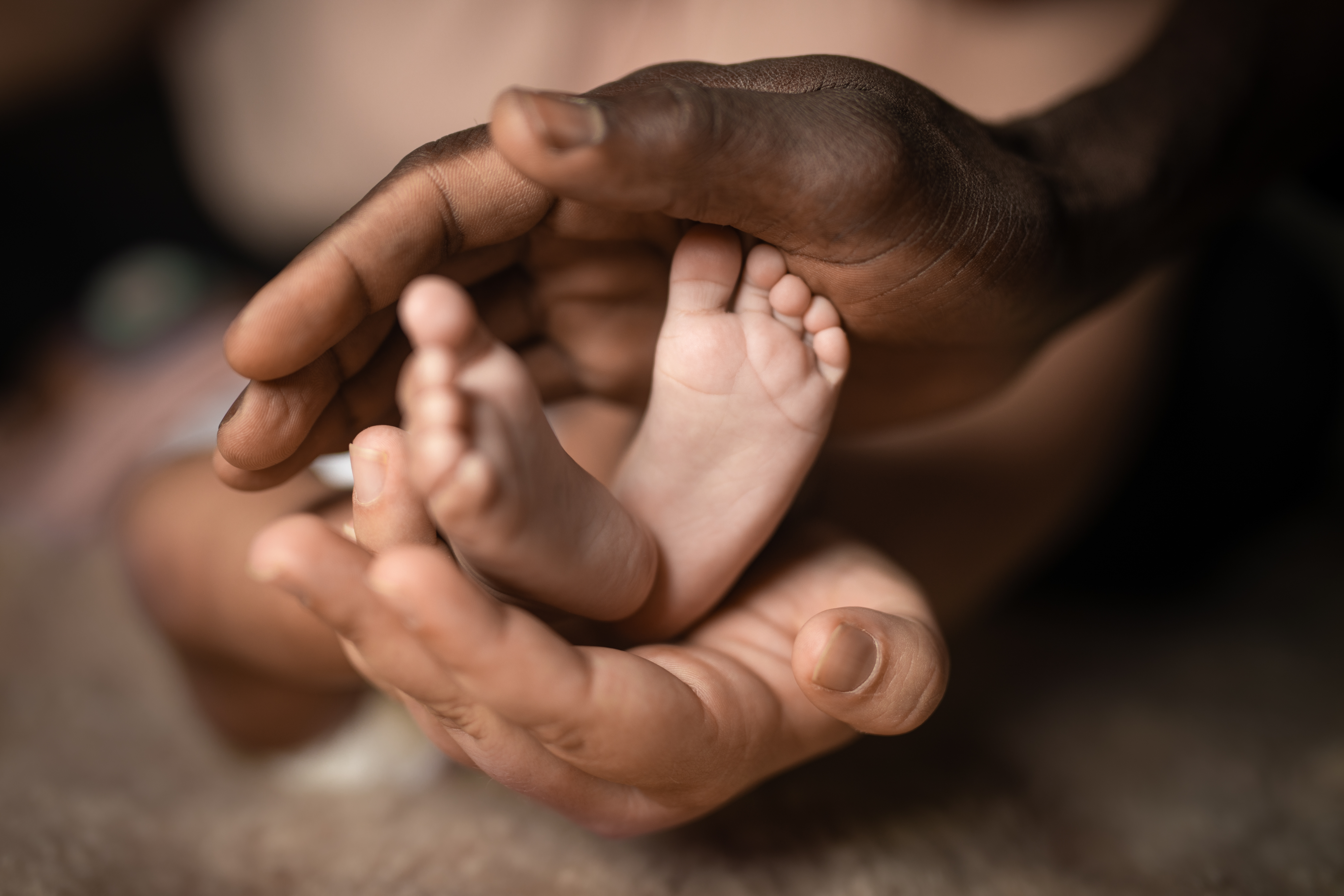
While many anecdotal reports suggest that reflexology can effectively induce labour, it's important to approach this method with realistic expectations. Every woman’s body reacts differently, and what works for one may not work for another.
Precautions and Considerations
While reflexology can be a wonderful support during the end of pregnancy, there are a few precautions to keep in mind:
- Always consult with your healthcare provider before starting any new therapy.
- Ensure your reflexologist is qualified and has experience in working with pregnant women.
- Listen to your body. If anything feels uncomfortable, let your practitioner know immediately.
Frequently Asked Questions About Reflexology in Pregnancy
Can Reflexology Help with Giving Birth?
Reflexology can be a supportive therapy during childbirth, not just for inducing labour. It can provide relaxation, reduce anxiety, and even help manage pain during labour. However, it's essential to work with a practitioner who is experienced in this area.
Can Reflexology Induce Labour Immediately?
Reflexology is not a guaranteed or immediate method for inducing labour. While some women report feeling contractions or starting labour shortly after a session, others may not experience any significant changes. Reflexology is best viewed as a complementary therapy that supports the body's natural process of preparing for labour rather than a direct trigger.
How Often Should I Have Reflexology Sessions During Pregnancy?
The frequency of reflexology sessions can vary depending on individual needs and the advice of your reflexologist. Generally, it's safe to have reflexology sessions throughout pregnancy, with many practitioners recommending starting regular sessions from the second trimester onwards. As you approach your due date, sessions may become more frequent, especially if you're using reflexology to help induce labour.
Are There Any Side Effects of Reflexology in Pregnancy?
Reflexology is generally considered safe for pregnant women when performed by a qualified practitioner. However, as with any therapy, there can be some side effects. These may include temporary tiredness, emotional release, or mild discomfort at reflex points. Most side effects are minor and transient, but it's important to communicate with your reflexologist about any concerns.
What Should I Look for in a Reflexologist When Pregnant?
When seeking reflexology during pregnancy, ensure the practitioner is certified and has specific training and experience in prenatal reflexology. They should be knowledgeable about the points to avoid until full term and how to adapt their techniques to your stage of pregnancy and individual needs.
Can Reflexology Help with Postpartum Recovery?
Reflexology can be beneficial in the postpartum period as well. It can support the body's recovery process, help rebalance hormones, and provide a sense of relaxation and wellbeing during the transition into motherhood. Reflexology can also address specific postpartum issues, such as lactation support and emotional balance.
Is Reflexology Beneficial for Babies?
While this article focuses on reflexology for pregnant women, reflexology can also benefit babies. Gentle reflexology can help soothe and relax babies, potentially aiding in sleep patterns and digestion. However, it's important to seek a practitioner trained in infant reflexology to ensure safety and effectiveness.
How Can I Prepare for a Reflexology Session?
Wear comfortable clothing to prepare for a reflexology session and ensure your feet are clean. Drink plenty of water before and after the session to help your body flush out any toxins released during the treatment. Having a light meal beforehand is also helpful so you're not distracted by hunger during the session.
Recommended for you!
Best SellersDiscover Reflexology with Centre of Excellence
Our Reflexology courses encompass a comprehensive learning path from foundational techniques to advanced practices. We offer a standard Reflexology Diploma Course, an Introduction to Reflexology Diploma Course for those new to the field, and an Advanced Reflexology Diploma Course designed for practitioners seeking to deepen their expertise and mastery of this ancient therapy.
Why Centre of Excellence?
- Accessibility: We believe that transformative education should be accessible to all. Our courses are priced affordably to ensure that everyone has the opportunity to learn and grow.
- Flexibility: Our courses are crafted to fit seamlessly into your life. Learn at your own pace, from the comfort of your home, and easily incorporate your educational pursuits into your daily schedule.
- Comprehensive Curriculum: Delve into the comprehensive study of reflexology, exploring various techniques and applications tailored to support health and wellbeing.
- Supportive Learning Environment: Enrolment comes with personalised tutor support and access to a community of like-minded learners.
Special Invitation
We're excited to offer our Reflexology Diploma Course, Introduction to Reflexology Diploma Course and Advanced Reflexology Diploma Course at the exclusive price of £29, saving you over £100!

